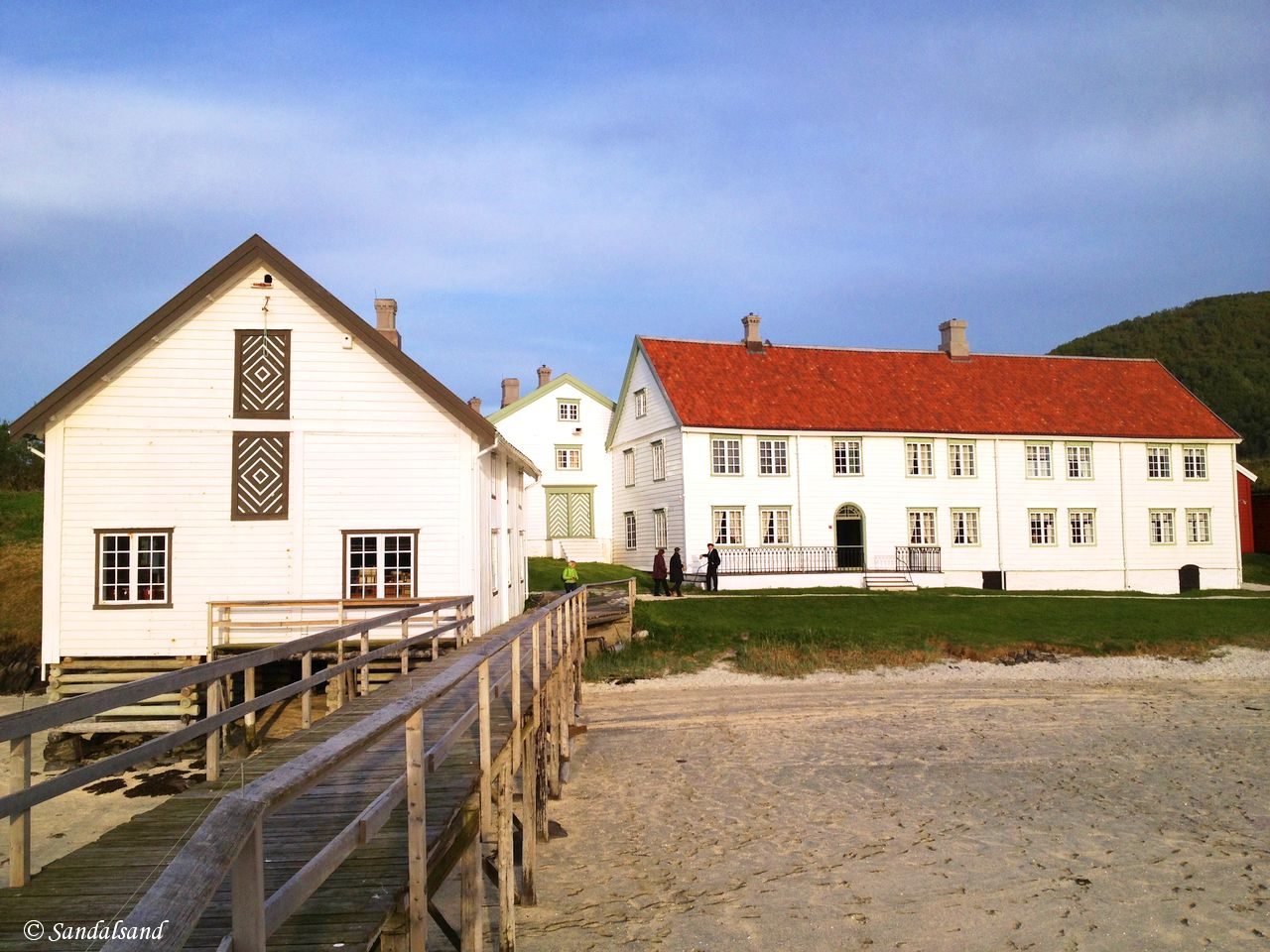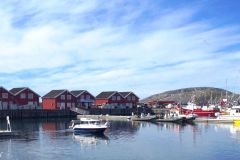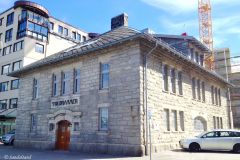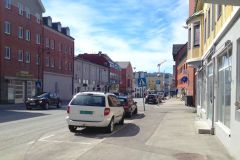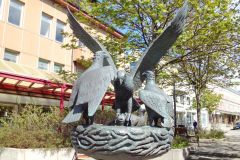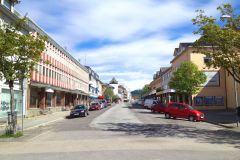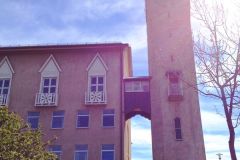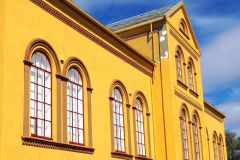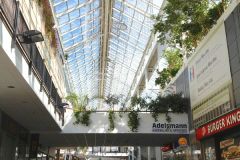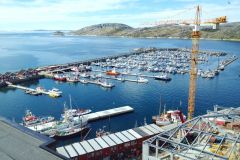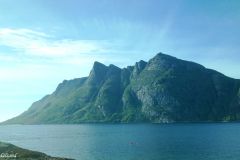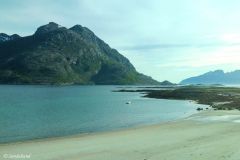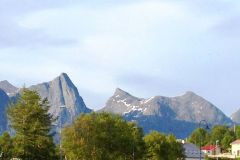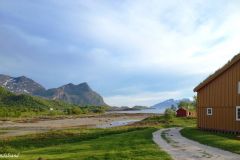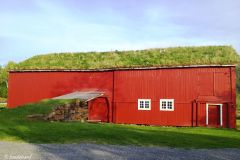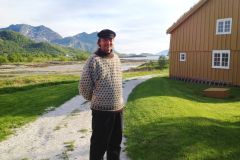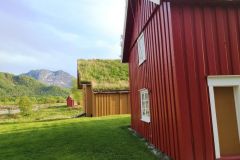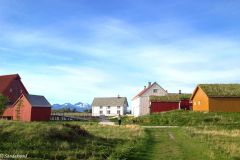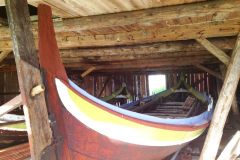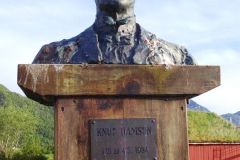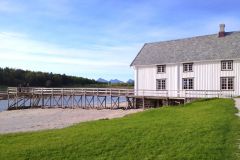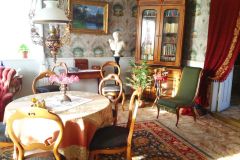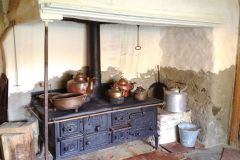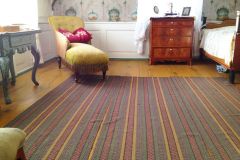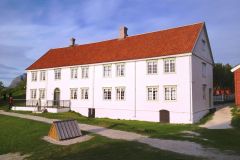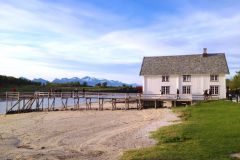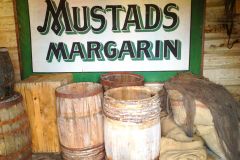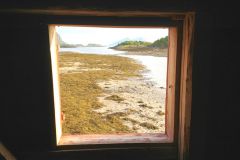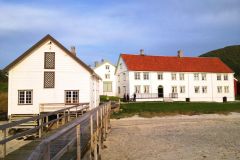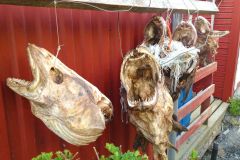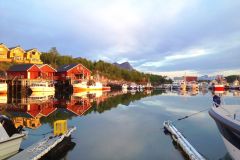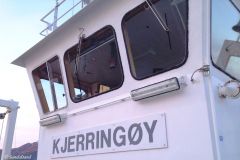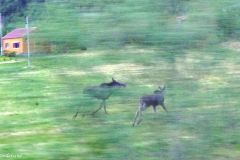Bodø is close to one of the most fascinating sights of North Norway – the old trading post of Kjerringøy. As the second largest town in North Norway, Bodø has had its ups and downs in history. On a brutal day in May 1940 it was forced back to square one. This is clearly evident even today.
Bodø – Norway’s gateway to the Arctic
About Bodø
That heading belongs to the National Geographic Traveler Magazine, although I would suspect the more famous and larger town of Tromsø further north would contend that label. The case is that the magazine presents Bodø as one of 20 must-see places for 2013, worldwide. This came as a surprise to the locals I met, but they were nonetheless very happy and proud of it.
To be true, the town itself does have many sights to hold your attention longer than the couple of hours the Hurtigruten coastal ships stop here. Bodø’s location and surroundings are far more exciting.
World War II
In the course of two and a half hours on the evening of the 27th of May 1940 attacking German forces dropped more than 200 high-explosive bombs and 1000 incendiary bombs on Bodø. 400 out of 600 buildings were destroyed, luckily only 15 people lost their lives. This disastrous event led to serious trouble for the population at the time, and also to the complete rebuilding of Bodø after the war. The customs office pictured above is one of few buildings from before the war still standing.
Post-war Bodø
The town was redesigned in a typical post-war functionalism style. Buildings in the town centre are quite modest, the streets are wide and straight. Over the last few years a number of new office buildings, hotels and so on have been erected. At the time of my visit there was a hectic construction activity going on along the entire seashore. It looked promising.
Bodø’s cathedral had to be rebuilt as well. The new cathedral was finished in 1956 and has later been included as a protected national heritage site as part of the post-war architecture in Bodø. It is a modest building, very pleasant to visit.
More about the town
Bodø’s population is less than 50,000 but it remains the centre of the Nordland County. The town is and has long been an administrative centre with major public services. It also has an advantage of being the northern terminus of the Norwegian railway network. (There is a railway at Narvik further north, linking with the Swedish network, but not the Norwegian.) As a transport hub for rail and sea, as well as being near the north-south major road axis of Norway, Bodø will probably in the future remain a vibrant town.
On the other hand Bodø has also in post-war years been a very important military town. The Cold War is over and the military forces are restructuring. The main threat is no longer an invasion from neighbouring Russia in the north, but elsewhere. Bodø’s significance is being reduced.
Bodø enjoys a central location on “the world’s most beautiful sea voyage”, as the National Geographic put it. The sea has always been the “Nor-Way” and Bodø is still part of the fishing, shipping and trading industries that created it.
Kjerringøy – North Norway’s wealthiest trading post in the 19th century
Other sights around Bodø
Bodø has a fine location for visitors on a vacation. Flying or sailing into town one sees the amazing mountains on the mainland as well as the spiky mountains of the Lofoten Archipelago across the Vestfjord to the west. There are plenty of hiking opportunities around.
The best known sight is probably Saltstraumen. This is the world’s strongest tidal current. There is a 3000 m long x 150 m wide x 30 m deep sound connecting two fjords. When the tide runs at high speed (20 knots) through the sound every six hours or so, it shifts huge amounts of seawater, approximately 400 million cubic metres. That’s about “160,000 Olympic-size pools of water”. In this process maelstroms are created. It is supposed to be spectacular, but I have had no opportunity to see it on my previous visits to Bodø. Nor had I time on this occasion, sadly enough.
On a later visit to Bodø, I went there.
About Kjerringøy
The other major attraction less than an hour from Bodø, is Kjerringøy. I went there on a warm, calm evening and found a most wonderful place. Look at these pictures first, and I will explain more about it below.
Kjerringøy was a trading post from the late 1700s offering services to a large area in addition to accommodation. It grew steadily and became in the latter half of the 19th century the most successful trading post in North Norway. Read more here. The Kjerringøy merchants would buy fish, dry it or salt it, and sell it to the partners in Bergen above all – the dominating port in Norway. In return for their “favours” they would buy goods from Bergen for reselling from their store. (I might add that by the beginning of the 19th century Bodø only had a few hundred inhabitants due to fierce competition from the Bergen merchants who had been controlling trade on the coast of Norway for centuries.)
Business caught on at the trading post after 1820. The top was reached around 1875. After this unlucky investments and a downturn in the fishing industry led to a dwindling importance of the trading post.
The merchant Zahl
The most successful merchant was Erasmus B. K. Zahl. This ambitious man married the 26 years older heiress to Kjerringøy and the couple rapidly made Kjerringøy into the significant trading post we are able to discover now. They had money at a time when most of Norway was poor. The couple were not shy to show off their wealth, as seen on the dining room wallpaper imported from Paris.
They did what coastal towns in southern Norway (Sørlandet) do today: Paint their house white. This prominent colour along the coast of Norway today was hardly visible at all in the 19th century. White paint would have been too expensive. That is why the manor at Kjerringøy is painted white on the sea-front, as a show-off to arriving fishermen, whereas the backside with the courtyard and garden had a coloured facade.
By (North) Norwegian standards the owners of Kjerringøy were immensely rich, by European standards their riches were quite modest. The manor is not very extravagant, it is by no means a palace. The size and interior does not compare to its counterparts elsewhere. Well, I suppose Einstein was right: Everything’s relative.
Benefactors
Despite this, the Kjerringøy merchants would behave like benefactors elsewhere: They sponsored artists and others. In the case of the famous Norwegian author and Nobel prize winner Knut Hamsun they gave him a loan in his young age, which he never paid back. Despite this, Kjerringøy has been the setting of many films and TV-series based on his books.
By the time the museum Nordlandsmuseet bought the trading post, in 1959, there had been little or no activity for many years and the buildings had deteriorated a lot. The museum must have done a tremendous job. The 15 buildings we are able to visit today have been restored to their former splendour: The manor, store, warehouse, the boathouses, barns and so on.
Last summer I visited a centre for the preservation of old vessels and maritime technology in Norheimsund, Hardanger. They had an interesting story about locals from that place in southern Norway travelling to Lofoten to take part in the fishing bonanza. But “travelling” is perhaps not the apt word for this voyage: They had small vessels and had to row and sail the length of the very long Norwegian coastline to get here. In the middle of winter. Some of them would possibly come to Kjerringøy for supplies. This was hard work, and it took time.
Leaving Kjerringøy
Leaving Kjerringøy late after midnight, the sun was still up. Driving back to Bodø we passed by the local golf course watching a group of players on a round. Foreigners would have a story to tell back home, having golfed under the midnight sun.
We had no intention of hitting that ball, but we did take notice of some elks running away from the road. There are many of them around here. Unfortunately we saw no white-tailed eagles (sea eagles) even though Bodø has the world’s densest population of them.
Book your stay in Bodø here (external link).

